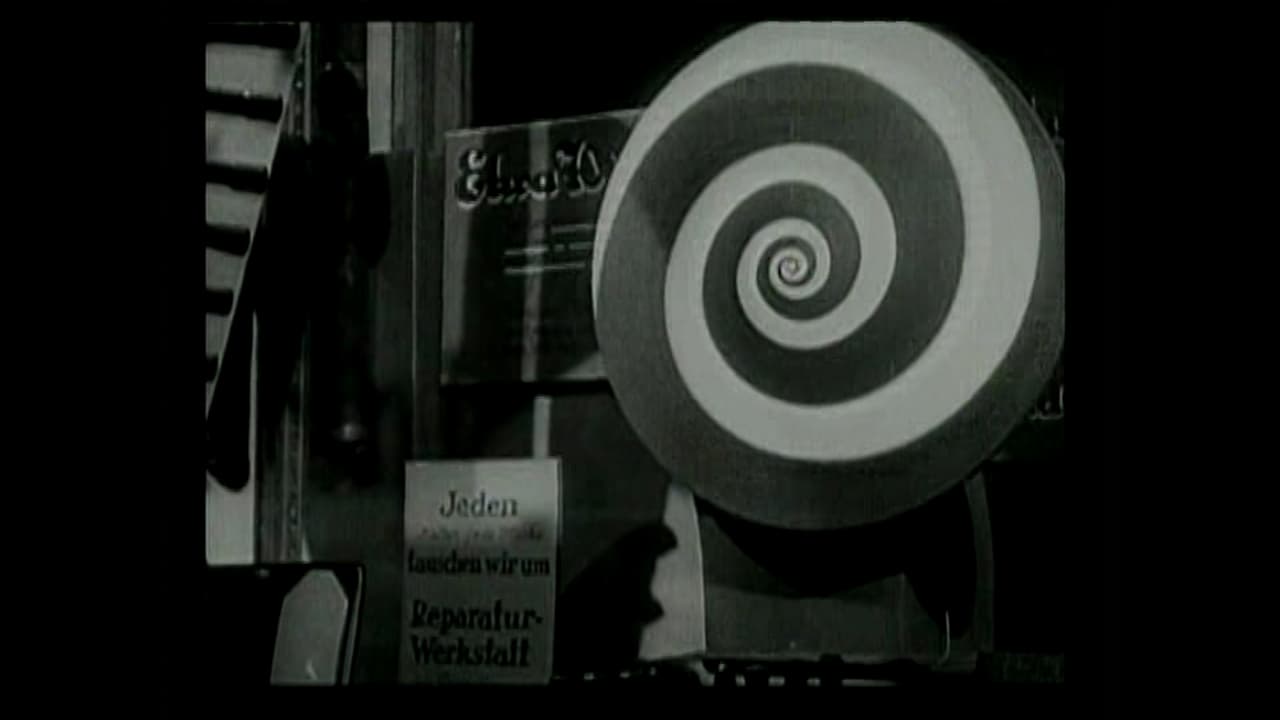

Walter Ruttmann's documentary love letter to the German capital, shows the city from the morning proletariat on their way to work, to the decadent bourgeois night of Wiemar Republic, 1920's high living opulence. It shows the shops and market stalls opening, the streets filling, industry moving. The almost constantly static camera captures both the poverty and the affluence. Along with the single shots of the surroundings, there are the occasional flourish of the avant-garde; kaleidoscopic, spinning images similar in experimental joy as Al Bricks Looney Lens series (Split Skyscrapers, Tenth Avenue, NYC (both 1924)), often using split screens and other such optical effects to create hall- of-mirror comparisons.The films style also often reflects the influence of Sergei Eisenstein and Dziga Vertov's Soviet montage, a style that suggested sub-textual meaning using a series of juxtaposing images. At the start of Berlin... the working classes, walking to their factories, moving uniformly, then images of cattle, and soldiers are sliced, creating the metaphor. Whilst not as politically motivated as the Soviet's, this is still an interesting document of a city living in stark contrasts, in a country still ravaged by the failures of WWI. But watching it now, you become reflective of the changes to this important city. It's history since the making of this film (events that the director would never see, due to his death in 1941), which is devastated by war, and divided by a wall. It's always fascinating to see visual "objects" of the past. Whilst this doesn't have the interesting longevity of the more political Soviet films, this is an important piece of silent-era documentary, and would go on to influence the British documentary movements of the 1930's and 40's.www.the-wrath-of-blog.blogspot.com
... View MoreMany times the most exciting trip is right around the corner; you don't need to go to some distant place as this Herr Graf often does ( of course common people can't afford it anyway ) or travel to exotic countries to discover and enjoy new landscapes and the different customs and accents of their people. A perfect example can be found in the film "Berlin – Die Sinfonie der Großstadt" (1927) wherein its director, Herr Walter Ruttmann, our avant-garde and eccentric cicerone, takes the audience on a special and experimental trip around the city of Berlin.It's certainly very complicated for a conservative German count, accustomed to simple classic film narrative, to describe this film but basically it is a modern, audacious, poetic, suggestive and unique portrait of a city that no longer exists. It is an historical picture of Weimar Berlin enriched by brilliant editing (that sometimes gives the viewer a sense of vertigo) and dazzling images. The film depicts the daily lives of the citizens of Berlin: young and old, rich and poor, people going about routine jobs in factory or office and the thrilling night life. Trains, machines and architecture are all part of a symphony of frenzied activity orchestrated by Herr Ruttmann in a superb and imaginative homage to the German capital city and its inhabitants.And now, if you'll allow me, I must temporarily take my leave because this German Count must wander through the empty Berlin Weimar streets.Herr Graf Ferdinand Von Galitzien http://ferdinandvongalitzien.blogspot.com
... View More"Berlin: Symphony of a Great City" is an art film that is pretty dull. However, it certainly does have a lot of historical importance. After all, the film shows a typical day in this city circa 1927--and by the end of WWII, most of it had been destroyed. In other words, it allows the viewer and historians to look back to a city and way of life that are gone.As for the movie, though, I just can't see why it has a current high rating of 7.9. This is very high--especially when it's a film with no real plot and which many viewers will become bored with after a while. After all, it consists of hundreds of clips all strung together to tell a tale of the city during a day--and that is all. It's competently made and of passing interest only.I like art films and documentaries--but this is a case of too much.
... View MoreBerlin: City Symphony is one of those early experiments in montage - early as in before sound was invented and right after Battleship Potemkin changed everything. It's not always montage, as some might believe from its recommendations (i.e. Koyannasquati), as the director Walter Ruttmann is making documentary as much as city-scape. It's about a full day and night among the dwellers and the objects of a city: the moving trains, the people shuffling by about their various concerns, and the people at jobs and things like a factory at work and phones being answered used for editing fodder.Some of this is dazzling work, cut and speed up to reflect a mood of a city that is vibrant and hectic, imaginative and crazy, and sometimes tending for the dramatic. Ruttmann also has a rather weird design with the pacing at times; a woman in one 'scene' looks over a river, and in a state of sorrow falls over. People rush over to see what has happened, and we see a shot of the water and the woman gone under... and then it cuts right away to a beauty pageant! It throws a viewer off to see Ruttmann's unconventional choices, and how images flow together like the racers (cars, horses, people, boxcars), and there develops a simple but engrossing poetry of people as "actors" in front of a camera on their daily travels or having fun like at the funshow in the auditorium. It's not always as exciting or delirious as a Russian counterpart like Man with a Movie Camera or Kino Eye, but it pays loving tribute to its city at its time and place, showing the light with the dark, the commonplace with the unusual.
... View More